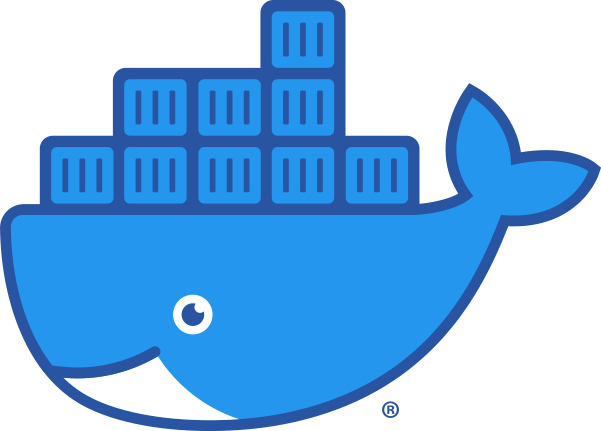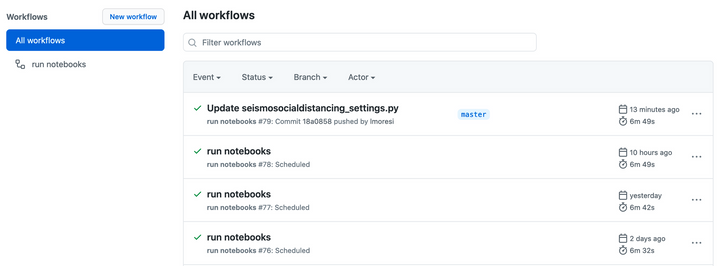Underworld and Docker (part 1)

While huge improvements in usability have been achieved in Underworld2, the installation process is still unfortunately as painful as ever. This difficulty is in large part due to Underworld's numerous dependencies, and also the multiple platforms we try to support. Compounding this, the legacy of a individual user's machine often conspires against success, rarely in obvious ways. Simply, compiling is not fun.
Enter docker.
What are docker containers ?
Essentially, docker containers allow developers to create completely self contained, ready to use, portable applications. They are similar to virtual machines, but there are a number of key differences that make the docker system lighter than traditional VMs. In particular, if you are using Linux, a docker container (i.e. a running docker instance) will directly leverage the existing operating system (live in memory), so there is no need for a secondary virtual OS (and the overhead it brings). For users on Mac OS X or Windows, some form of VM is required to run in the background for the docker instance to utilise, though this is setup and launched automatically.
The other key benefit is the Docker Hub ecosystem. This service provides two key functions:
Automated Builds: Whenever a change is made to the Underworld repositories, this triggers the generation of a new docker image build at Docker Hub. The build is created by taking a fresh Linux image (Debian), installing Underworld's dependencies, and then downloading and compiling Underworld.
Image Publication: Once the automated build process is complete, the fully baked image is made available at Docker Hub. Users can obtain this image directly via the command line (see below). This allows users to obtain the very latest development version of the code immediately, and to update trivially. Stable versions of the code will also be made available (soon), and can easily be selected at the command line.
Our Docker Hub page is here: https://hub.docker.com/u/underworldcode/
Getting setup for dockers
Installation instructions for various platforms is provided at Docker Hub: http://docs.docker.com/engine/installation/
Using Underworld dockers
We are ready to use our Underworld docker.
Windows & OS X: Make sure your docker-machine VM is up and running! The easiest way to start the docker-machine is to use the Docker Quickstart Terminal. This will launch the docker-machine VM (creating it first if necessary), and also setup various environment variables within the terminal. For Windows the Docker Quickstart Terminal requires that virtualization be enabled, which can be done in the BIOS settings when you boot your machine.
Now let's run Underworld. We will launch a new docker container using the docker run command:
$ docker run -p 8888:8888 underworldcode/underworld2
This command will create a new container using the underworldcode/underworld2 image. Note that it will first check to see if the image exists locally, and otherwise will download a copy from the Docker Hub. This will only happen the first time you run the command; subsequent execution will use the downloaded image. Once the new instance is created, Jupyter notebooks is launched within the container. Note that we also pass an option of the form -p host_port:docker_port which tells docker to perform a port mapping from the docker instance to the host. This allows us to use our native web browser to access the active docker notebook instance at http://localhost:8888/ (Windows & OS X users see below).

Windows & OS X: Note that you are actually running your dockers within the docker-machine VM, so you need to browse to the address of the VM not localhost. In the example above you would open http://192.168.99.100:8888/ in your browser where the ip address is 192.168.99.100. To find out the address of your docker-machine, you should run docker-machine ip default from within your Docker Quickstart Terminal. Here we've assumed that your docker-machine is named 'default' (which in most cases it should be), but if that does not seem to be working, you can determine the name of your docker-machine by running docker-machine active.
Containers and Images
It is important to understand the difference between these two docker objects.
Containers: Containers are a form of virtualisation. Unlike traditional virtual machines, containers do not encapsulate the entire operating system, only a smaller layer on top of the base operating system. A Docker container is simply a particular implementation of this concept.
Images: Images are essential snapshots of containers at a particular instance. By taking a snapshot of a container, developers are able to completely encapsulate the environment necessary to run an application. Images are the objects published to the Docker Hub. They are read-only.
When a user executes docker run, effectively they are creating a new container, the starting point of which is the docker image originally obtained from the Docker Hub. This container may be used ephemerally (with execution effectively restarting from the image each time), or may be retained and modified (as is more typical for traditional VM use). For Underworld dockers, ephemeral usage is usually the most natural choice.
You may convince yourself of these details using the docker images and docker ps commands. The former command will list the docker images you have available locally, while the latter will list all your containers. If you have already ran an Underworld2 docker (as we did earlier using the docker run command), you should have a local copy of the underworldcode/underworld2 image:
$ docker images
REPOSITORY TAG IMAGE ID CREATED VIRTUAL SIZE
underworldcode/underworld2 latest b6421851238e 8 hours ago 1.147 GB
Likewise, you will have created a new container for each time you used docker run:
$ docker ps -a
CONTAINER ID IMAGE COMMAND CREATED STATUS PORTS NAMES
5e157f9a7f09 underworldcode/underworld2 "/usr/local/bin/tini " 2 seconds ago Up 1 seconds 0.0.0.0:8888->8888/tcp awesome_mietner
69f8ad2e4988 underworldcode/underworld2 "/usr/local/bin/tini " 6 seconds ago Exited (0) 3 seconds ago romantic_wing
98e69734bb38 underworldcode/underworld2 "/usr/local/bin/tini " 10 seconds ago Exited (0) 7 seconds ago distracted_bell
196b061e87d8 underworldcode/underworld2 "/usr/local/bin/tini " 26 seconds ago Exited (0) 10 seconds ago suspicious_hugle
916f8761c9ee underworldcode/underworld2 "/usr/local/bin/tini " 31 minutes ago Exited (0) 31 minutes ago small_colden
Note that we used the -a option which lists all containers, including those which are no longer running. From the STATUS column, we can see that only a single container is currently running. The IMAGE column shows which image the container was derived from. Exited containers may be restarted using the docker start command, while you may remove containers you no longer require using docker rm. Similarly, redundant images may be deleted using docker rmi.
Launching Underworld docker containers
Let's take a closer look at the docker run command:
$ docker help run
Usage: docker run [OPTIONS] IMAGE [COMMAND] [ARG...]
Run a command in a new container
-d, --detach=false Run container in background and print container ID
-i, --interactive=false Keep STDIN open even if not attached
-p, --publish=[] Publish a container's port(s) to the host
--rm=false Automatically remove the container when it exits
-t, --tty=false Allocate a pseudo-TTY
-v, --volume=[] Bind mount a volume
Only the more immediately useful options are listed above. For the full list, run docker help run.
Returning to the earlier example,
$ docker run -p 8888:8888 underworldcode/underworld2
you may note that we selected the underworldcode/underworld2 image, but no command was specified to run in the container. In this case, a default command is instead executed. This default is specified by the developer at image creation time. For the Underworld docker, the default behaviour is to launch Jupyter notebooks via the jupyter notebook command, and so the above is equivalent to
$ docker run -p 8888:8888 underworldcode/underworld2 jupyter notebook
The instances created above come prepackaged with Underworld tutorial notebooks which reside within the docker containers, but what if you want to run your own notebooks or python scripts? Well it is possible to upload your models via the Jupyter notebooks web interface, but this far from ideal. A better approach is to use the -v option to bind a local (ie host) directory to a directory within the container. In effect, this will allow your docker instance to seamlessly act upon files which reside on the host machine.
$ docker run -p 8888:8888 -v $PWD:/workspace/my_data underworldcode/underworld2
The volume mapping binding option takes the form -v host_directory:docker_directory. In this example, we map the current execution directory to the /workspace/my_data directory within the docker. Note that we have used the PWD environment variable as a shortcut to the current directory absolute path. You should find that the running notebook instance now displays the files that exist in the current host directory. Any file modification and/or creation will be recorded to the host machine (in the current execution directory).
Direct python (non-notebook) usage is also very straightforward:
$ docker run -v $PWD:/workspace/my_data underworldcode/underworld2 python YourLocalScript.py
In this instance, the generated container will run the command python YourLocalScript.py. Note that for the script YourLocalScript.py to be available inside the container, we still need to use the -v option to make the local directory accessible to the container.
As a final usage example, we will run an interactive docker container by simply launching a bash shell:
$ docker run -v $PWD:/workspace/my_data -p 8888:8888 -i -t underworldcode/underworld2 /bin/bash
For interactive usage, it is necessary to include the -i and -t options. You should find yourself at the prompt of a bash shell inside the Underworld docker container. We have still include both the directory mapping (to access files on the host), and the port mapping (should you wish to launch a notebook). The Underworld installation may be found at /root/underworld2, while as per your volume mapping, your host files should be accessible at /workspace/my_data. Note that you are the root user, so have full privileges, but don't have to worry about breaking things as you can simply discard the current container and start again! The Underworld docker image is based off a Debian distribution, so apt-get may be used to install any further packages (remember to first run apt-get update).
Obtaining different versions of Underworld
Developers publishing dockers may tag particular images to correspond to a particular code release. To select a tagged docker image, simply postfix the docker image name with the required tag. For example, run a container based off Ubuntu 14.04
$ docker run ubuntu:14.04
Note that if no tag is specified, the latest tag will be accessed which corresponds to the latest image build. Underworld2 does not have any tagged stable releases yet, so all docker usage will correspond to the latest development version of the code. Once available, stable tagged images will be recommended for most usage, though the ability to trivially switch to different tagged images allows users to easily experiment with newer releases or development versions.
Remember that docker run will first check locally for the requested image. Users may need to occasionally update their local image to incorporate recent bug fixes (if using a tagged release image), or to obtain the very latest Underworld developments (for bleeding edge users). Updates are affected using the docker pull command:
$ docker pull underworldcode/underworld2
MPI and docker
Your Underworld simulations may be executed in parallel by simply invoking mpirun as usual, though the MPI execution must occur within the container:
$ docker run -v $PWD:/workspace/my_data underworldcode/underworld2 mpirun -np 2 python YourLocalScript.py
Windows & OS X: You may need to ensure your docker-machine is configured to allow access to multiple CPU cores. Note that the standard Docker setup leverages VirtualBox for virtualisation, so you will need to access the VirtualBox configuration panel.
While not currently applicable to large scale parallel simulation, early research into using dockers across HPC facilities shows promise.
Other hints
Windows & OS X: If you are encountering difficulties running docker commands, restarting your docker-machine (using docker-machine restart default) may be necessary.
Windows: You may need to turn the firewall off when installing the Docker Quickstart Terminal. Note that some issues have been encountered with using the alpha version of Kitematic for Windows 7, hopefully they will fix these in the full release. In the meantime the Docker Quickstart Terminal does work in Windows 7 using the instructions above.




Comments ()